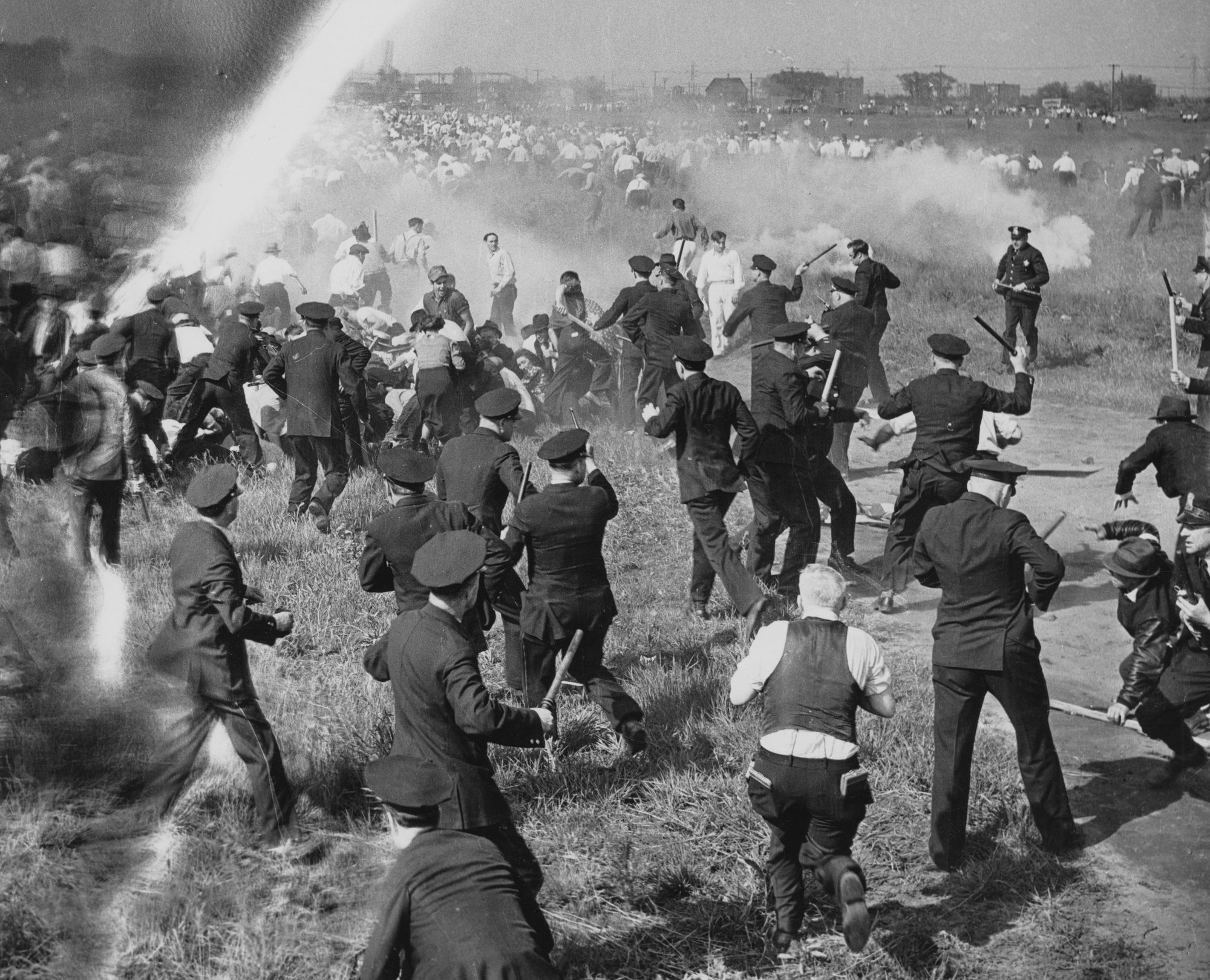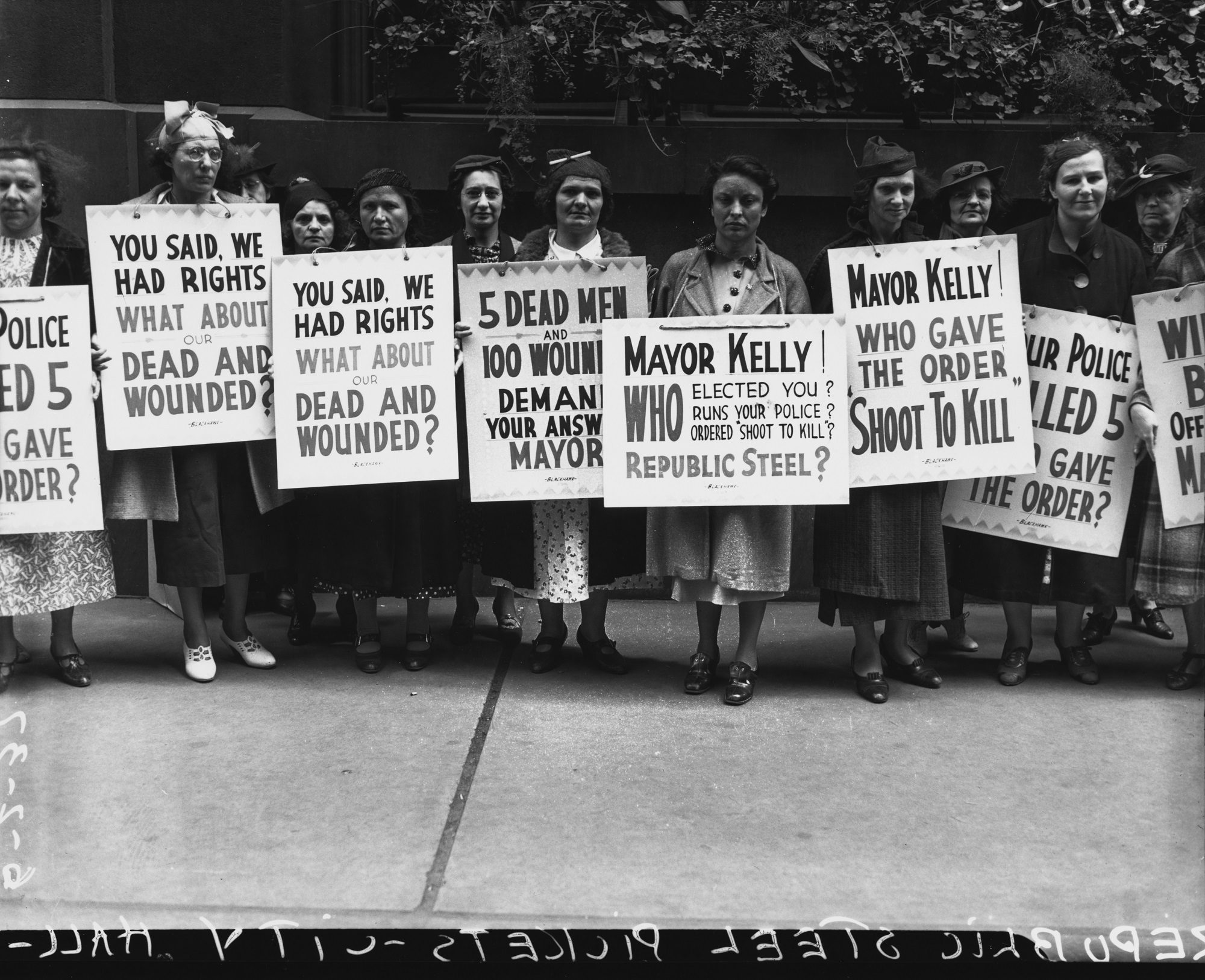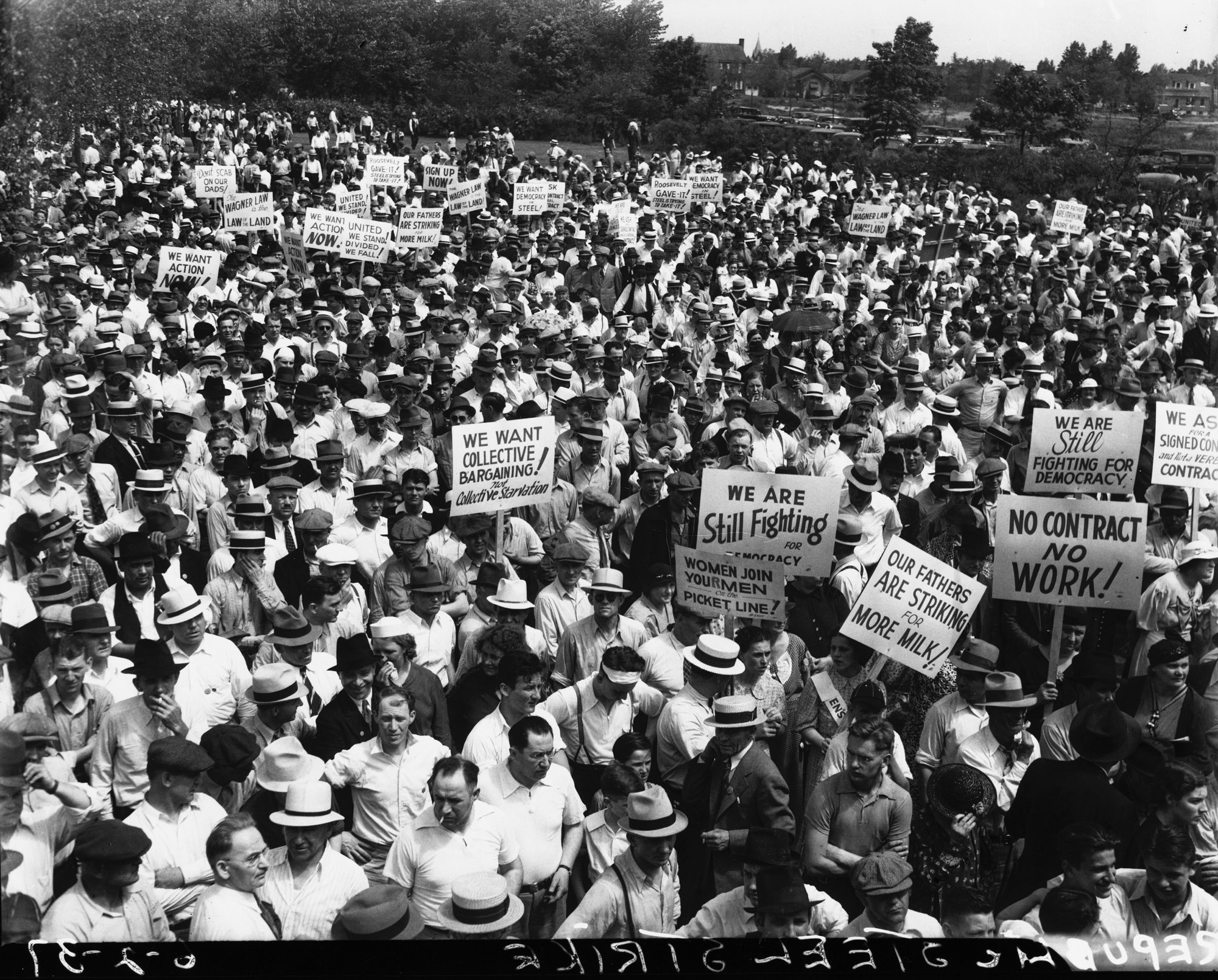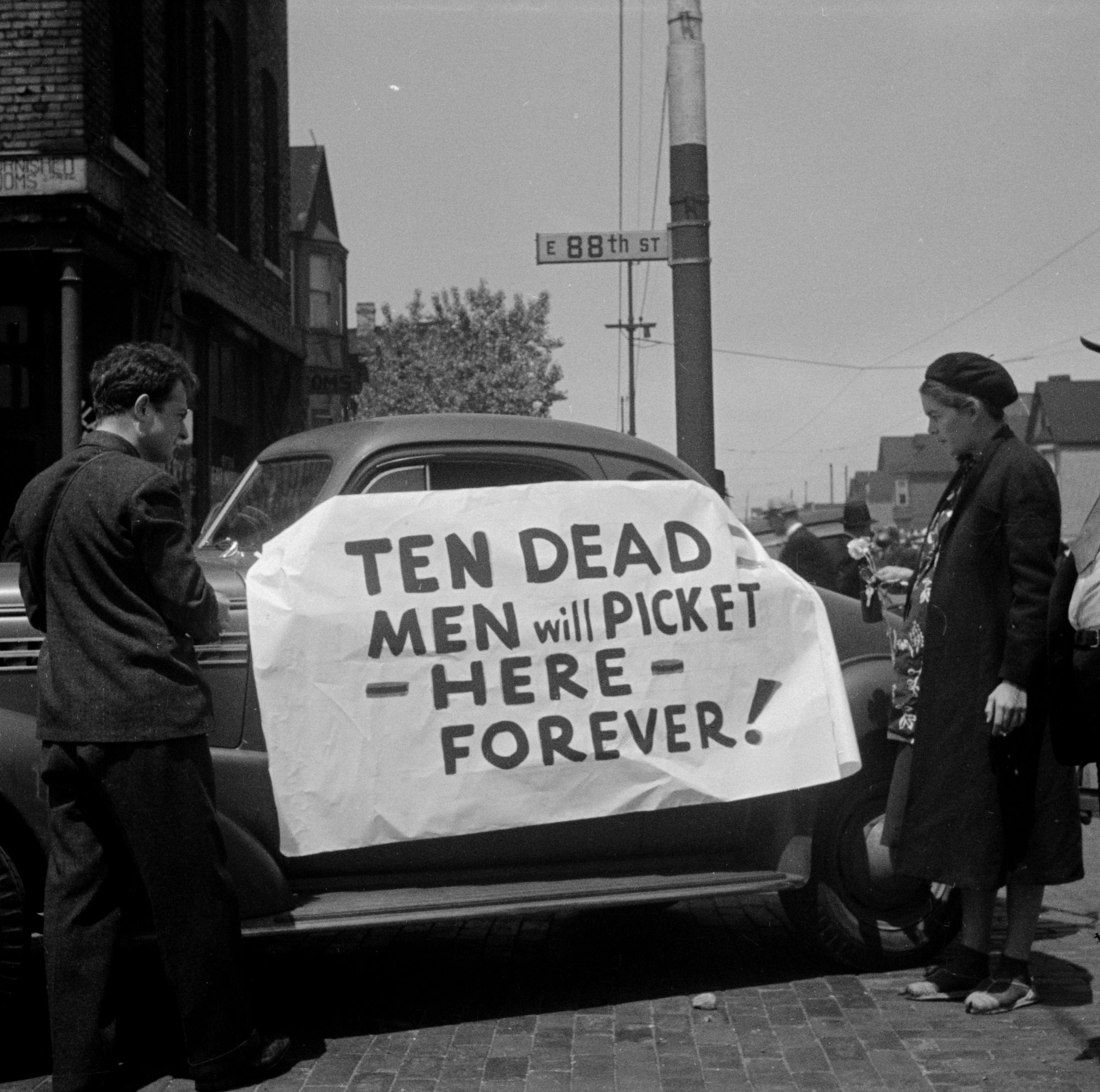In this blog post, CHM chief historian and Studs Terkel Center for Oral History director Peter T. Alter talks about a major event in Chicago and national labor history that is often excluded from standard historical interpretations. He sits on the website advisory board of the Southeast Chicago Historical Society, which recently launched a new storytelling website.
Content warning: violence, police brutality
The Southeast Chicago Historical Society (SCHS) and the Exit Zero Project recently launched the rich and expansive Southeast Chicago Archive and Storytelling Project. This website has two major parts: the Archive and the Storytelling Project.
The Archive includes over 1,000 items primarily from the collections of the SCHS. The Storytelling Project uses objects, documents, photographs, oral history interviews, and other materials from the archive to develop major story lines about Southeast Chicago. The two story lines currently available are “Mexican-American Journeys” and the “Memorial Day Massacre.” Two more storylines are in the works―the “Closing of the Steel Mills” and “Environmental Pollution and Activism in the Region.”

Police confronting strikers outside Republic Steel, Chicago, May 30, 1937. DN-C-8769A, Chicago Sun-Times/Chicago Daily News collection, CHM
Although a major event in Chicago and US history, standard historical interpretations often exclude the Memorial Day Massacre. As part of the Little Steel Strike of 1937, workers struck against Ohio-based Republic Steel for better treatment and working conditions and higher wages. Republic had a mill located on Chicago’s Southeast Side. Company management planned to break this strike with replacement workers and, ultimately, violence.
On Sunday, May 30, 1937, striking Republic workers and their allies attempted to set up a picket line in the prairie in front of the mill. Chicago police, who were already on the scene, responded with guns and clubs, injuring roughly one hundred people and killing ten men: Sam R. Popovich, Earl J. Handley, Kenneth Reed, Hilding Anderson, Alfred Causey, Leo Francisco, Otis A. Jones, Joseph Rothmund, Anthony Taglieri, and Lee Tisdale. Officers claimed they responded to violence with violence to protect the mill and the country from “communists.” A congressional investigation showed the claims of worker violence to be false, and only a small fraction of those there that day held radical left-wing political beliefs.

Protests in support of Republic Steel strikers continued after the Memorial Day Massacre, such as these women picketing at City Hall, Chicago, June 2, 1937. DN-C-8805, Chicago Sun-Times/Chicago Daily News collection, CHM

Protests in support of Republic Steel strikers continued after the Memorial Day Massacre, such as this group of strikers and sympathizers at a Republic Steel rally, Chicago, June 2, 1937. DN-C-8741, Chicago Sun-Times/Chicago Daily News collection, CHM
The Southeast Chicago Archive and Storytelling Project brilliantly tells the “Memorial Day Massacre” story using the scrapbook of Gerry Jolly Borozan as the central artifact. Mrs. Borozan, who was a teenager when the events unfolded, created a scrapbook with newspaper articles, letters, and photographs documenting the Massacre and its aftermath. She eventually donated it to the Southeast Chicago Historical Society. Using the scrapbook, photographs, oral histories, film footage, congressional testimony, and a striking interpretative framework, the story line recounts the events of late May 1937 and its consequences.

A woman and a man look at a sign on an automobile at the Republic Steel strike, Chicago, 1937. CHM, ICHi-076408; Lawrence Jacques, photographer
Users, for example, can learn about the men who perished. The story line includes a Chicago Defender article stating that African American steelworker Lee Tisdale would “go down [in history] as one who gave his life that all workers may be freed from industrial slavery.” Sam Popovich, a forty-five-year-old immigrant from southeastern Europe, died on the field that day after the police clubbed and shot him. Eventually, by 1941, Republic Steel recognized the steelworkers’ right to organize. Anyone interested in the city’s history should definitely visit the Southeast Chicago Historical Society and the Exit Zero Project’s website to learn more.
Join the Discussion